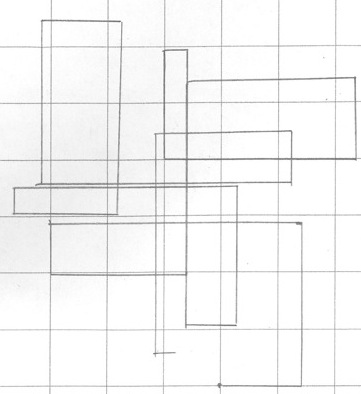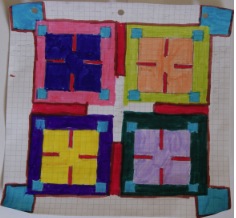Copyright © University of Cambridge. All rights reserved.
We had a collection of responses from Hymers
College School. Katie wrote that while doing the challenge
she found out a lot of different shapes the different tables
made. She added that some people may say "How would you know when
to end the sequence?". But the answer was that the shapes will end
where you started. On a few of the tables she figured that
once you have got the hang of the pattern you would be able to do
the sequence backwards like on the $2$ times table. Ishita
wrote:-
The things I have discovered are in the $7$ times table, in
which I experimented on and I found out that in the $7$ times
table, if on Microsoft Windows Logo, if you turn left $45$ degrees,
it takes $8$ times before it meets with the point were it started
and the angles are a lot larger, it is actually $2$ times as large
as the $7$ times table in $90$ degrees.
When I do the $7$ times table, but then I turn left $90$
degrees it is a totally different shape and it only takes $4$ times
to connect to the start from the end, and in comparison, it is a
much smaller shape. This means that if I have a different angle on
one of the times tables, for example the $3$s, it would be
different in comparison of size, quantity in times of having it
meet the start and in the style of the shape.
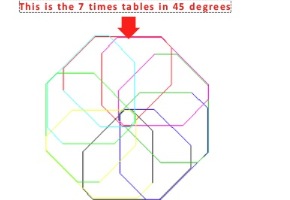
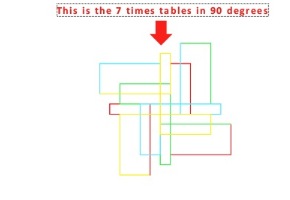
From the same school we also had responses
from Jessica, Jamie and Quintin. Here are their pictures:-
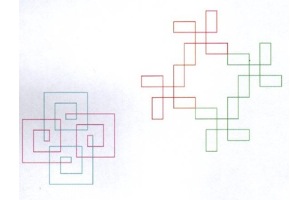
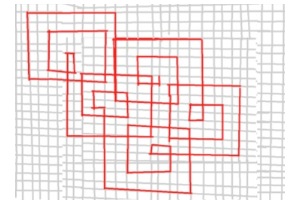
A teacher from Stanmore Primary School
wrote:-
Key Stage 1 maths group have investigated what happens if they
use the three times table to draw their pattern. They found that
the pattern repeated and that it rotated. The tricky bit was
keeping track of which way to turn and making sure that you drew a
straight line!
Next week they are going to investigate what happens if they
use a different times table to create their pattern. They made some
predictions: 'it might be the same pattern but a different size'
and 'it might be a different pattern but it will still repeat and
still rotate'.
They thought that it was amazing that using numbers could
create a repeating pattern.
Here are some images they sent
in:
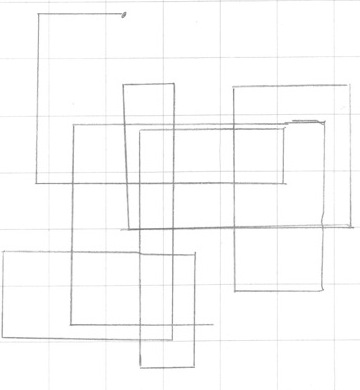
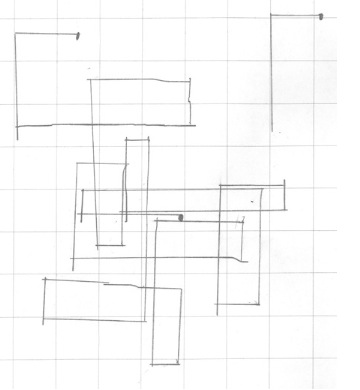
Nina from Wolfson Hillel School sent
us the following notes. These impressed me; particularly her
ideas which led to the picture.
For my design I chose to use prime numbers. I made a pattern
which went $3,2,7,5,1,5,7,2,3$; once I had gone round four times
and had made a full shape I decided to make smaller version of it
inside it. I knew that for my full shape I needed a square that
measured $21$cms by $21$cms so I measured inside the shape and
I found I could make four squares that measured $7$cms by
$7$cms so I divided all the numbers by three as $21$ divided by $3$
equals $7$. Then I coloured all the bits in between $5,1,5$ red,
all the corners blue and the rest I just chose nice colours, then I
went over the regular sized shape's outline in brown.





